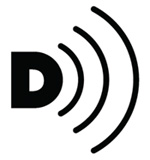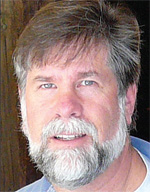The Other Side to CC
SEATTLE
Video description and closed captioning are two sides of the same coin: descriptions providing blind and visually impaired television viewers an audio narrator's depiction of the video portion of a television program, captions providing deaf and hard of hearing viewers video text of what's spoken in the audio portion of a program. But there's a wide gulf between the presence of the two services in television programming today.

By 1989, virtually the entire primetime schedule on the major broadcast networks was captioned, and today much of cable network fare and local news programs provide captions. Captions are viewed not just by those with hearing problems, but by people in sports bars, fitness clubs and other areas where a noisy environment makes it impossible to hear a program's audio.
In contrast, a relative handful of programs in the multi-hundred channel universe provide video description service, among them Fox's "The Simpsons," CBS's "CSI: Crime Scene Investigation," an impressive portion of PBS's schedule, and some programs and movies on cable networks, particularly Nicke-lodeon and Turner Classic Movies.
The reasons for the disparity in availability between the two services fall into the regulatory, cost, and technical categories.
MARKEY BILL
In the mid-1990s, the FCC began preparing timelines and requirements for both closed captions and video description. They adopted regulatory requirements for both, but while the closed caption provisions got a relatively free ride, the television and motion picture industries fought requirements for video descriptions in court in 2002, claiming the commission did not have authority to issue such requirements. The industry won and those regulations were tossed out.
That legal rampart to the commission's requirements may be breached in the near future, as Congressman Edward Markey (D-Mass.) has introduced H.R. 3101, the "Twenty-first Century Communi-cations and Video Accessibility Act of 2009," which, if passed, provides the FCC the authority to issue video description requirements and instructs the commission to get after it.
Cost for adding descriptions to a feature film has been estimated from around $5,000 to $10,000. Costs for an hour of television programming are approximately $1,000 per hour to $4,000 per hour—all in all, significantly more than captioning.
"The major cost is time-on-task, human capital that actually has to digest, synopsize, write and place the content that would be the description around the product," said John Mazza, vice president of sales for CaptionMAX, a Minneapolis-base company that provides description services. The more information the producer sent along with copy of the program, the less Mazza's crew would have to do, and the less it would cost.
"You can send us the program on a DVD, on a tape, you can FTP a low res file, send us a hard drive or a thumb drive," he said. "I'm really able to take just about any format for ingestation."
DTV CONVERTER BOXES
Getting the descriptions on the program is the straightforward part. Getting that audio to the viewer's ears has turned out to be more of an adventure.
The ATSC, in its Digital Audio Compression Standard (AC-3, E-AC-3) for DTV, specified a "VI" (visually impaired) channel specifically to carry video descriptions. That guided DTV encoder and transmission providers, as well as DTV set makers, cable and satellite providers.

Larry Goldberg, WGBH Media Access Center The National Telecommunications and Information Administration (NTIA), which administered the $40 coupon program for DTV converter boxes, only recommended that coupon-eligible boxes provide for access to video descriptions, but many manufacturers offered that capability.
Still, there have been problems. "We're beginning to realize that the problems are spinning mostly from technical issues related to how programs are tabbed with the proper descriptors that flag a set-top box or DTV that there's another audio channel there that you can access," said Larry Goldberg, director of media access at WGBH, who oversees the Boston public station's Media Access Center. The Media Access Center also provides video description services.
Goldberg chairs a subgroup the FCC has empanelled, which includes set makers, cable, satellite and broadcast representatives, to hash out such technical issues. In the case of the broadcaster, he said it is important to check the PSIP (Program and System Information Protocol) metadata accompanying each described program to ensure it indicates the program is described. The subgroup meets every two weeks over the phone, and will have a face-to-face meeting at the FCC on Nov. 9.
Back in 1998, at a meeting of the Advisory Committee on Public Interest Obligations of Digital Television Broadcasters, Nolan Crabb, then editor of the American Council of the Blind's Braille Forum, and himself blind, anticipated a very real problem at the end of the video description chain: "If you've ever shut your eyes and tried to work with the on-screen menu on your television set you know that that's a very difficult thing indeed."
Goldberg added that blind viewers "need pretty much across the board sighted assistance to turn on the descriptions today."
Various surveys have looked at blind viewers' preferences as to which programs should be described. Those studies indicate blind viewers feel they are fairly well served by the existing audio on news programming, but want descriptions for drama and sitcom programs. And in case you see a disconnect between blind people and TVs, Crabb, in his 1998 presentation, cited a U.S. Department of Education study carried out by the American Foundation for the Blind: 99 percent of blind and low vision people own television sets.
Get the TV Tech Newsletter
The professional video industry's #1 source for news, trends and product and tech information. Sign up below.
